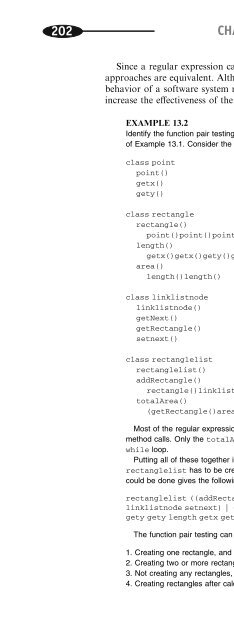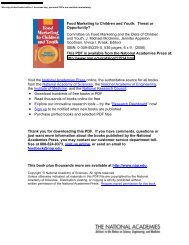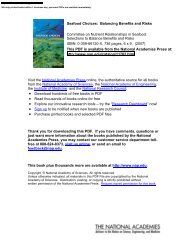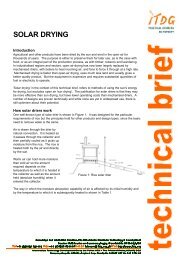- Page 1 and 2:
TEAMFLY
- Page 4:
SCHAUM’S OUTLINE OF Theory and Pr
- Page 8:
Theory and Problems of SOFTWARE ENG
- Page 12:
Software Engineering is not just su
- Page 16:
For more information about this boo
- Page 20:
CONTENTS ix 10.2 Software Testing F
- Page 24:
SCHAUM’S OUTLINE OF Theory and Pr
- Page 28:
The Software Life Cycle 1.1 Introdu
- Page 32:
CHAPTER 1 The Software Life Cycle 3
- Page 36:
CHAPTER 1 The Software Life Cycle 5
- Page 40:
Software Process and Other Models 2
- Page 44:
CHAPTER 2 Software Process and Othe
- Page 48:
CHAPTER 2 Software Process and Othe
- Page 52:
CHAPTER 2 Software Process and Othe
- Page 56:
CHAPTER 2 Software Process and Othe
- Page 60:
CHAPTER 2 Software Process and Othe
- Page 64:
CHAPTER 2 Software Process and Othe
- Page 68:
CHAPTER 2 Software Process and Othe
- Page 72:
CHAPTER 2 Software Process and Othe
- Page 76:
CHAPTER 2 Software Process and Othe
- Page 80:
CHAPTER 2 Software Process and Othe
- Page 84:
CHAPTER 2 Software Process and Othe
- Page 88:
CHAPTER 3 Software Project Manageme
- Page 92:
CHAPTER 3 Software Project Manageme
- Page 96:
CHAPTER 3 Software Project Manageme
- Page 100:
CHAPTER 3 Software Project Manageme
- Page 104:
CHAPTER 3 Software Project Manageme
- Page 108:
CHAPTER 3 Software Project Manageme
- Page 112:
CHAPTER 3 Software Project Manageme
- Page 116:
CHAPTER 3 Software Project Manageme
- Page 120:
Software Project Planning 4.1 Proje
- Page 124:
CHAPTER 4 Software Project Planning
- Page 128:
CHAPTER 4 Software Project Planning
- Page 132:
CHAPTER 4 Software Project Planning
- Page 136:
CHAPTER 4 Software Project Planning
- Page 140:
CHAPTER 4 Software Project Planning
- Page 144:
CHAPTER 4 Software Project Planning
- Page 148:
CHAPTER 4 Software Project Planning
- Page 152:
CHAPTER 4 Software Project Planning
- Page 156:
CHAPTER 4 Software Project Planning
- Page 160:
CHAPTER 4 Software Project Planning
- Page 164:
CHAPTER 4 Software Project Planning
- Page 168:
CHAPTER 4 Software Project Planning
- Page 172:
CHAPTER 5 Software Metrics 73 ‘
- Page 176:
CHAPTER 5 Software Metrics 75 examp
- Page 180:
CHAPTER 5 Software Metrics 77 2 ¼
- Page 184:
CHAPTER 5 Software Metrics 79 state
- Page 188:
CHAPTER 5 Software Metrics 81 Volum
- Page 192:
CHAPTER 5 Software Metrics 83 Produ
- Page 196:
86 Answers to Review Questions 1. E
- Page 200:
88 See Fig. 5-6 for the control flo
- Page 204:
90 I "exiting" a II "part 3" 10. In
- Page 208:
92 EXAMPLE 6.1 Consider a project t
- Page 212:
94 6.5 Risk Mitigation Risk mitigat
- Page 216:
96 CHAPTER 6 Risk Analysis and Mana
- Page 220:
98 6. Company X has historical data
- Page 224:
100 Knowledgeable peers are used. T
- Page 228:
102 EXAMPLE 7.1 If an error happens
- Page 232:
104 CHAPTER 7 Software Quality Assu
- Page 236:
106 Problems 1. Build a checklist f
- Page 240:
108 CHAPTER 7 Software Quality Assu
- Page 244:
110 SQA—John Responsibilities: Co
- Page 248:
Requirements 8.1 Introduction 112 T
- Page 252:
114 SRC code 8.4 Behavioral Modelin
- Page 256:
116 not be allowed in the state dia
- Page 260:
118 Test cases Test coverage analys
- Page 264:
120 4. What criteria should be used
- Page 268:
122 3. Draw a DFD for the B&B syste
- Page 272:
124 Customer Call 3: Customer calls
- Page 276:
126 13. Draw a system diagram for t
- Page 280:
128 EXAMPLE 9.1 A robot is required
- Page 284:
130 EXAMPLE 9.4 Design the interfac
- Page 288:
132 The version in Fig. 9.5 does no
- Page 292:
134 9.4.2 GLUE TOKENS Bieman and Ot
- Page 296:
136 Dharma’s Module Coupling Dhar
- Page 300:
138 1 2 2.1 C.4 C.5 C.6 C.7 C.8 C.9
- Page 304:
140 Class student char* name public
- Page 308:
142 1. A person tries to turn the d
- Page 312:
144 CHAPTER 9 Software Design There
- Page 316:
146 A specification is essential to
- Page 320:
148 This list of subdomains could b
- Page 324:
150 By the fourth test case, every
- Page 328:
152 if(a==b||b==c||a==c) if(a==b&&b
- Page 332:
154 10.3.4.6 C1 Subsumes C0 EXAMPLE
- Page 336:
156 10.5.1 OPERATIONAL PROFILE CHAP
- Page 340:
158 Review Questions 1. What are th
- Page 344:
160 15. Given the following code, d
- Page 348:
162 3. Apayroll program will calcul
- Page 352:
164 8. For the area of the triangle
- Page 356:
166 14. The following are the feasi
- Page 360:
168 Minimal tests: C0: inputs outpu
- Page 364:
170 CHAPTER 11 Object-Oriented Deve
- Page 368:
172 In each group, nouns representi
- Page 372:
174 CHAPTER 11 Object-Oriented Deve
- Page 376: 176 CHAPTER 11 Object-Oriented Deve
- Page 380: 178 EXAMPLE 11.12 Use existence dep
- Page 384: 180 Problems CHAPTER 11 Object-Orie
- Page 388: 182 3. Draw an object model for the
- Page 392: 184 CHAPTER 12 Object-Oriented Metr
- Page 396: 186 This metric is calculated on a
- Page 400: 188 Metric 5: Response for a Class
- Page 404: 190 EXAMPLE 12.2 Calculate MHF and
- Page 408: 192 class Md Mi Ad Ai A x(),y() non
- Page 412: 194 Review Questions 1. Why are McC
- Page 416: 196 However, neither the sum nor th
- Page 420: 198 Metric 5: Response for a Class
- Page 424: 200 13.2 MM Testing CHAPTER 13 Obje
- Page 430: CHAPTER 13 Object-Oriented Testing
- Page 434: CHAPTER 13 Object-Oriented Testing
- Page 438: CHAPTER 13 Object-Oriented Testing
- Page 442: CHAPTER 14 Formal Notations 209 the
- Page 446: CHAPTER 14 Formal Notations 211 lib
- Page 450: CHAPTER 14 Formal Notations 213 3.
- Page 454: CHAPTER 14 Formal Notations 215 Ans
- Page 458: CHAPTER 14 Formal Notations 217 Cla
- Page 462: Z 1 (see Operand) Z 2 (see Operator
- Page 466: INDEX 221 Lack of Cohesion in Metho
- Page 470: INDEX 223 Software metrics (see Met









